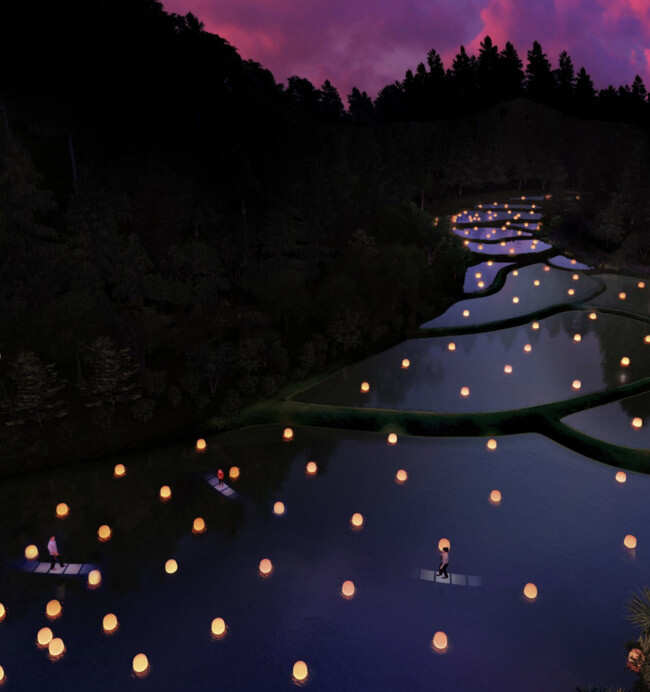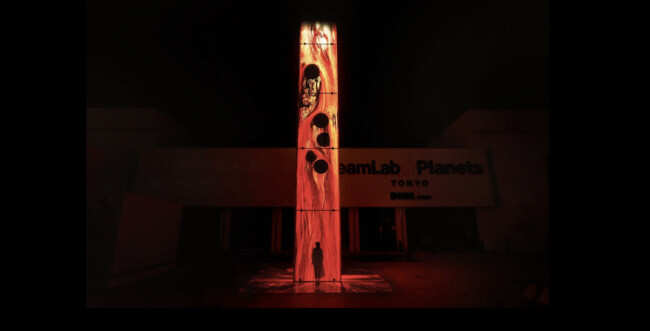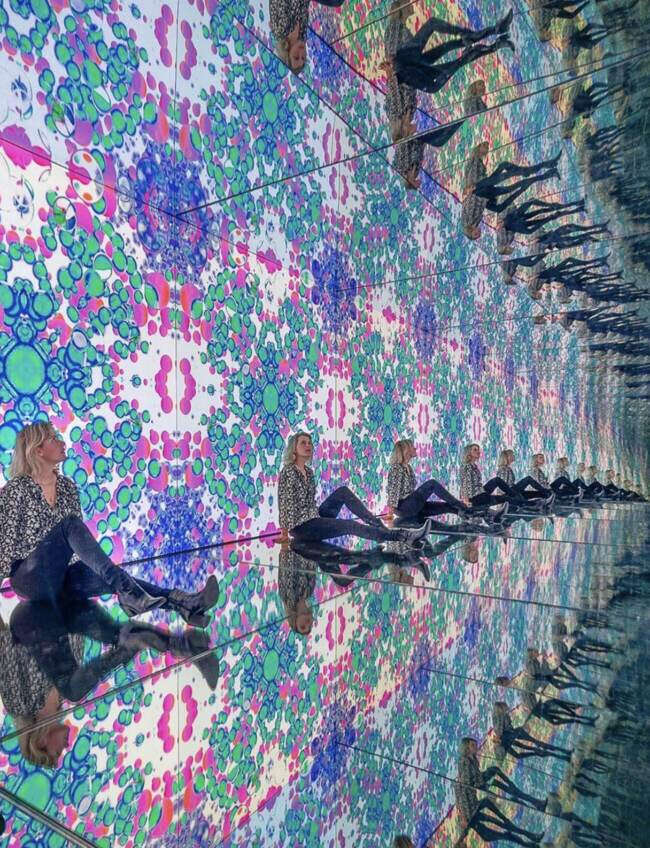As artists embrace immersive art, the future of art might resemble living within paintings
Dutch Masters at Fabrique des Lumières, Amsterdam

"I could lie down here and stare at this forever", savs someone out loud at the Van Gogh 360° experience. We are inside a makeshift tent in Cuffe Parade's World Trade Center. After having been showcased in cities across the world, the immersive art exhibition finally made its way to India in early 2024. Tickets sold like hot cakes, for everyone wanted to see Van Gogh's work come to life on a macro level. Even ones who didn't know of the Dutch Master, wanted in on it. After all, it was being touted as one of those big-ticket experiences that was only on display for a limited amount of time. As Starry Night melted away into Wheatfield of Crows for the thousandth time, more people poured into the tent, looking for a place to lie down, rest against, and be a part of Van Gogh’s landscape for an hour or so. Was it hypnotic? To a certain extent, if your view wasn’t marred by the flash going off for the umpteenth time as people took the perfect picture for the ’gram.
Teamlab Botanical Osaka

The culture around immersive and performative art has come a long way since museums were erected to celebrate artists and educate the masses on the brushstrokes that have stood the test of time. Once essentially an extension of museums, exhibitions have taken on a world of their own as they branch into behemoth beasts that are all the rage on social media. In 2020, the immersive entertainment industry in the US was valued at $61.8 billion, having seen an increase of 19% since 2019, a number that keeps shooting up as multiple exhibits mushroom all around the globe. One such wildly popular exhibit(s) is courtesy of teamLab, an art collective founded in 2001 by a smattering of artists in Japan. Borderless by teamLab has been around since 2018 and has seen an uptick in the last couple of years as tourism in Japan has been on the rise. According to their website, “Borderless is a world of artworks without boundaries, a museum without a map.” The artwork flows from room to room in a dynamic narrative where there is no beginning or end to the exhibit. Unlike a traditional museum, where you will find yourself retracing your steps to find the prized Monet or Vermeer, exhibitions like Borderless or immersive art centres like Fabrique des Lumières will ensure that you skip the queues to see art up close and touch it with no reprimanding, too. Since opening doors to Borderless, teamLab has launched permanent and temporary exhibitions in The Venetian Macao, an open-air museum in Nagai Botanical Garden in Osaka, a couple more in Singapore, and the list goes on and on. We term them “wildly popular”, not just because every person visiting Japan has been posting stories from their experience at a teamLab exhibit but because their first-ever exhibit saw a footfall of 2.3 million visitors in their first year of opening. For context, the Van Gogh Museum in Amsterdam only saw 1.7 million visitors in 2023, while the Picasso Museum in Barcelona saw about a million.
Frameless, London

Their revenue due to ticket sales is at par with the MET, so it’s safe to say that while purists might turn their nose up towards these so-called art exhibits, the masses are loving it.
From a new business avenue, immersive exhibits are highly lucrative. Since these exhibits don’t house physical artefacts, the process of setting up an exhibit comes at a far lesser cost. To add to that, these exhibits encourage people to experience history and fantasy all under one roof. You can see the Mona Lisa up close from every angle humanly possible at one of these exhibits without the presence of a bone- crushing crowd that awaits you at the Louvre. For up-and-coming cities that are marketing themselves as the future, immersive exhibits play as a marker of development. AYA Universe in Dubai is a prime example of the same. The interactive exhibit/museum is a much-visited spot among families and tourists alike, regaling the locals with what’s to come and giving tourists a glimpse into how futuristic the city promises to be.
In 2019, the immersive entertainment industry was valued at $61.8 billion in the US

With attention spans decreasing, a multidisciplinary art show is probably what keeps the younger generation hooked as opposed to a day out in an actual museum, and perhaps the fact that these immersive art exhibits pose serious competition to historical museums is what is keeping the latter from collaborating with the former. However, newer establishments are jumping on the boat to ensure that they attract the right crowds by doing partnerships with these immersive institutions. Moco Museum is dabbling in both immersive and performative art with an immersive display by Studio Irma in Amsterdam and a reciprocal one in collaboration with renowned performance artist Marina Abramovi in London. Recognizing the fact that there’s a change afoot in the art space is the first step towards embracing change. The Grand Palais in Paris has set up a separate entity called ‘Grand Palais Immersif’ to purely dabble in immersive collaborations.
Teamlab Planets, Tokyo

These same art exhibitions have given way to augmented reality and VR experiences, changing how we perceive entertainment in the present and future. But even as young entrepreneurs open more art spaces, the immersive art enterprise faces the risk of over-saturation. Lighthouse Immersive Inc., the Canada-based company behind the exhibit “Immersive Van Gogh”, recently filed for bankruptcy after facing insolvency in Canada. The news, when it first broke out, was shocking, given that their exhibit is one of the most well-known ones, having had shows in the US and overseas. The exhibit made a surprise appearance in the first season of the show Emily In Paris, too. However, a closer look at their show dates looks drab, with none of the days on the calendar being sold out. From being a runaway hit to barely getting people to visit, the interest in specific exhibits is waning. Will it see a resurgence when there are 15 more Van Gogh exhibits by different companies? We don’t know the answer to that yet. What we do know is that the market for immersive exhibits is cut- throat and ingenuity is an important trait to own
in this industry.
Digital installation by Studio Irma

Which makes us wonder, does watching a light and sound show match up to the real deal? The conversation around that is pretty subjective. There is something markedly different about examining the texture of a canvas up close, but living in a painting as it moves around you is highly desirable, too. Come to think of it, we loved the Night At The Museum film franchise a great deal because, at any given point of time, while visiting a museum, you have probably pondered what the true story behind each of the exhibits is. What if Michaelangelo’s David could tell you all about his fight with Goliath, or the figure in Edward Munch’s ‘The Scream’ could say to you precisely what it is that terrifies it so? The medium through how we interact with art might be changing, but the one thing that remains true is that in art, we trust.
Nxt Museum, Amsterdam

Post a Comment